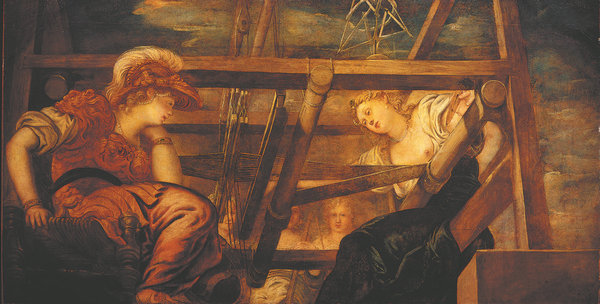

The exhibition starts with an introduction to Venice, which focuses on the public representation of the city, its architecture and prominent residents. This first section, Venice as a Theater, depicts the city as a stage teeming with emotions, drama and passion in the eyes of the artists, says Bisceglia.
The second section, Venetian Beauties, gathers paintings of different genres featuring women as the main figure. "The mythological and Biblical scenes illustrate the virtues and strong spirit of heroines, goddesses and saints, but also the sensual beauty of their unclothed bodies," she says.
The third section is devoted to portraits of knights, artists and children. In the fourth section, Myth and Antiquity, visitors can see one of the largest paintings in the exhibition, Minerva and Arachne, by Tintoretto and members of his workshop. At 2.72 meters wide and 1.45 meters high, it portrays the rivalry between Arachne, a weaver of great skill, and Minerva, the Roman name of Athena from the mythologies. The scene is painted from the perspective of someone looking up at the two figures, and shows them seated at Arachne's loom.
According to the myth, the two use the loom to weave different scenes, Athena weaving one showing the gods punishing the mortals, and Arachne, a depiction of Zeus seducing women. Offended by the satirical depiction of her father, Athena punishes Arachne, turning her into a spider, condemned to weave for eternity.